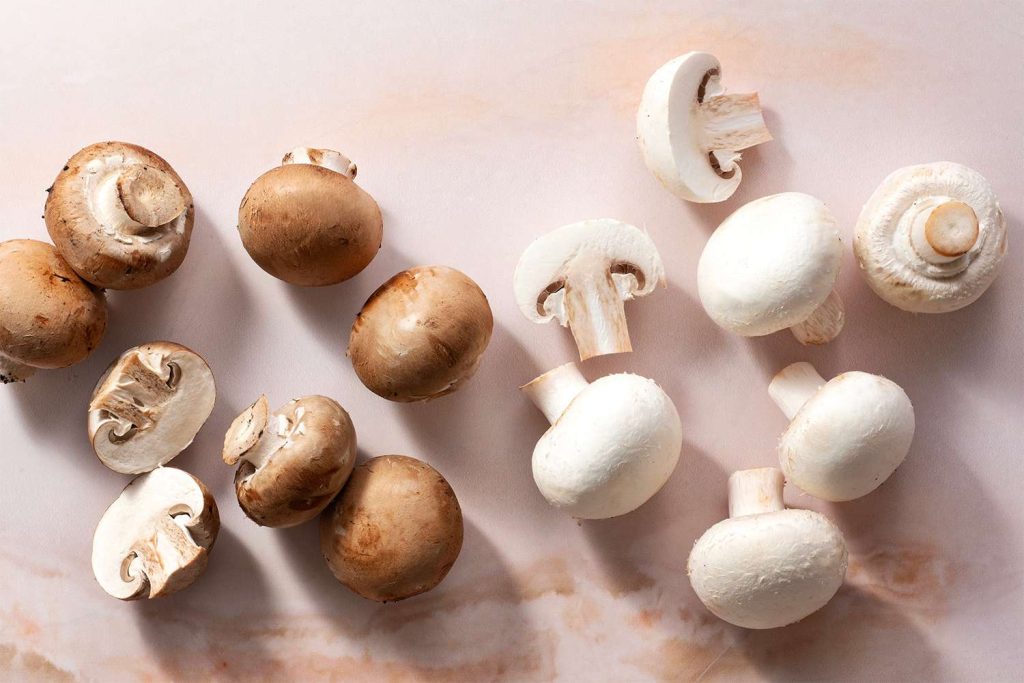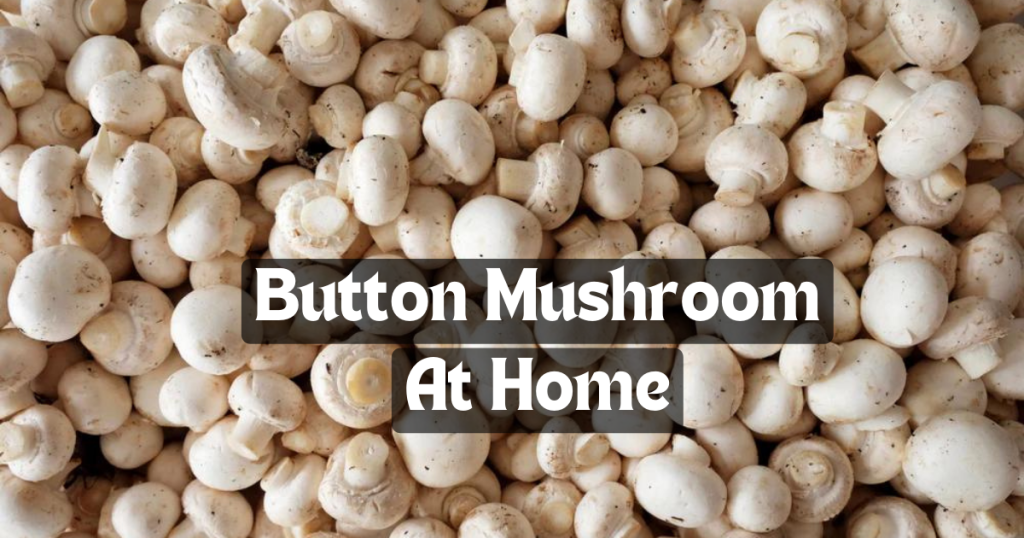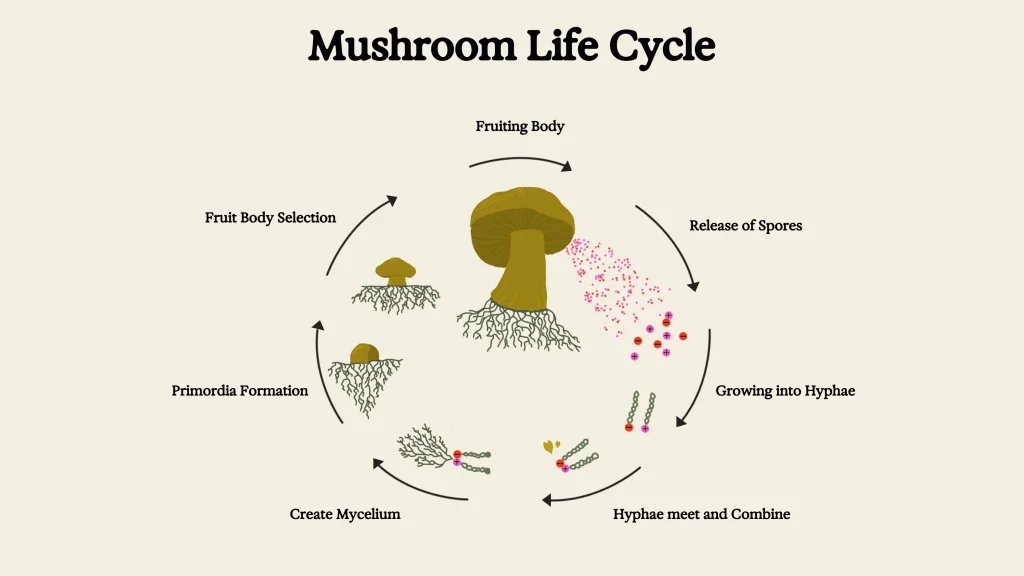To grow button mushrooms, begin by preparing a substrate and then inoculate it with mushroom spores. Maintain the substrate in dark, moist conditions to encourage growth.
Growing button mushrooms at home can be a rewarding endeavor, offering gardeners and cooking enthusiasts alike the chance to produce their own fresh mushrooms. This process involves a few key steps, including substrate preparation, inoculation, and proper care during the growth phase.
Button mushrooms thrive in a controlled environment where temperature, humidity, and light are carefully managed to mimic their natural habitat. By understanding the specific needs of these fungi, cultivators can ensure a successful harvest. This guide aims to demystify the process, making it accessible to beginners and experienced gardeners alike, providing all the necessary information to start growing button mushrooms.
Introduction To Button Mushroom Cultivation
Button mushrooms delight many kitchens worldwide. Growing them is both rewarding and fascinating. This section will guide beginners through the process of cultivating button mushrooms.
Popularity And Benefits
Button mushrooms are popular for good reasons. They offer rich flavors and numerous health benefits. Here’s why they stand out:
- High in vitamins and minerals
- Low in calories
- Adaptable to many dishes
- Easy to grow at home
Basic Mushroom Growth Cycle
Understanding the growth cycle is key to successful cultivation. Here’s a simplified version:
- Spores germinate into mycelium.
- Mycelium colonizes the substrate.
- Environmental change triggers fruiting.
- Mushrooms mature and are ready for harvest.
Selecting The Right Mushroom Variety
Before growing button mushrooms, choose the right variety. This choice can affect your garden’s success. Let’s explore the characteristics of button mushrooms and see how they stack up against other varieties.
Characteristics Of Button Mushrooms
Button mushrooms, or Agaricus bisporus, are popular among growers. These white, rounded mushrooms are a culinary favorite. They thrive in cool temperatures. Button mushrooms need rich, fertile soil. You’ll find them easy to grow indoors.
- Easy to Grow: Beginner-friendly cultivation.
- Mild Flavor: Suits various dishes.
- Short Lifecycle: Harvest in just weeks.
Comparing With Other Varieties
Different mushrooms offer diverse flavors and textures. Consider the table below to compare:
| Mushroom Type | Growth Conditions | Flavor Profile |
|---|---|---|
| Button | Cool, dark, moist | Mild, versatile |
| Shiitake | Wood logs, shaded | Rich, umami |
| Oyster | High humidity, light | Sweet, delicate |
| Portobello | Similar to button | Meaty, robust |
Creating The Ideal Growing Environment
Growing button mushrooms is an exciting project. These fungi thrive in a controlled setting. Let’s create that perfect environment for them to flourish. Focus on temperature, humidity, light, and ventilation.
Temperature And Humidity Control
Button mushrooms love cool temperatures. Keep them between 55°F and 60°F for best growth. Use a thermostat to monitor the climate. Keep humidity high, around 90-95%. A humidifier can help maintain this level.
Check these conditions regularly. Use a hygrometer for accurate humidity readings. Consistent conditions prevent stress and promote healthy mushrooms.
Lighting And Ventilation
Mushrooms require minimal light. Ensure they get indirect sunlight or use a soft artificial light. Avoid direct sun as it can harm them.
Good air movement is crucial. It prevents mold and supplies fresh air. Use a small fan for circulation. Keep it on a low setting to avoid drying out the mushrooms.
With these steps, your button mushrooms will grow strong and tasty. Remember, the right balance is key for a successful crop.
Materials And Equipment Needed
Embarking on the journey to grow button mushrooms? Begin with the right materials and equipment. This guide outlines what you need for a fruitful mushroom harvest.
Substrate Preparation
Button mushrooms thrive on a rich substrate. The substrate acts as soil for mushrooms. For the best results, follow these steps:
- Compost: A blend of straw, horse manure, and gypsum.
- Water: Maintain moisture during composting.
- Gypsum: Helps prevent clumping and adds nutrients.
- Pasteurization: This step kills unwanted bacteria.
Containers And Tools
Proper containers and tools ensure successful growth. Use these:
- Trays or Tubs: Choose shallow, wide containers.
- Thermometer: Monitor compost temperature.
- Humidity Gauge: Check air moisture levels.
- Misting Bottle: Keep substrate damp.
- Spawning Jars: Sterile jars for mushroom spores.
| Essential Button Mushroom Growing Equipment | |
| Equipment | Use |
|---|---|
| Compost Turner | Aerate and mix compost. |
| Spawn | Mushroom seeds to plant in substrate. |
| Scalpel | Cut and plant spawn into compost. |
| Gloves | Protect hands and keep sterile. |
Step-by-step Cultivation Process
Growing button mushrooms is a rewarding hobby. With the right approach, anyone can cultivate these fungi at home. Follow this step-by-step process to ensure a bountiful harvest.
Spore Selection And Inoculation
Select high-quality spores from a reputable source. This ensures a healthy crop. Use sterile techniques to inoculate your chosen medium with these spores.
- Choose spores: Pick strains known for their yield and robustness.
- Sterilize tools: Keep all equipment clean to avoid contamination.
- Inoculate: Introduce spores into the substrate under sterile conditions.
Substrate Colonization
The substrate provides nutrients for the growing mycelium. This phase requires patience and care.
- Prepare substrate: Use a mix of compost and straw as a nutrient base.
- Maintain conditions: Keep the environment dark and humid.
- Monitor growth: Look for white mycelial threads spreading through the substrate.
Fruiting And Harvesting
Once colonization is complete, it’s time for mushrooms to fruit. Harvest them at the right time for the best flavor.
| Step | Action | Result |
|---|---|---|
| 1 | Induce fruiting: Lower temperature and expose to indirect light. | Mushrooms start to form. |
| 2 | Harvest: Pick mushrooms when caps are fully open. | Ready to eat or sell. |
Troubleshooting Common Problems
Button mushrooms delight many with their earthy flavor. Yet, growing them at home can sometimes lead to common problems. This section delves into solutions for those issues. By managing pests, diseases, and moisture, growers can ensure a bountiful mushroom harvest.
Pest And Disease Management
Pests and diseases can hinder mushroom growth. Here are steps to keep your crop safe:
- Inspect regularly for signs of infestation.
- Use organic fungicides for mildew and mold.
- Remove infected mushrooms immediately to prevent spread.
- Ensure good airflow around your mushrooms.
Moisture And Contamination Issues
Mushrooms love moisture, but too much can lead to contamination. Keep them healthy with these tips:
| Issue | Solution |
|---|---|
| Excess Water | Reduce watering and improve drainage. |
| Dry Substrate | Mist to maintain consistent moisture levels. |
| Contaminants | Use sterilized soil and tools. |
Harvesting And Storing Mushrooms
Growing button mushrooms is thrilling, especially when it’s time to harvest. This stage is crucial for taste and shelf-life. Proper techniques ensure your mushrooms stay fresh longer. Let’s explore the best practices for harvesting and storing button mushrooms.
When To Harvest
Identifying the right time to pick button mushrooms is key. Look for these signs:
- Caps are fully opened.
- The veil beneath the cap is just starting to tear.
- Mushrooms are still firm to the touch.
Harvest before the gills are fully exposed. This preserves the mushroom’s flavor and texture.
Post-harvest Handling
Once picked, proper handling keeps mushrooms fresh. Follow these steps:
- Gently twist mushrooms off the substrate.
- Handle with care to avoid bruises.
- Use a soft brush to remove any substrate particles.
- Avoid washing to prevent moisture absorption.
Place mushrooms in a cool, dry place immediately after harvest.
Store in a paper bag or cardboard box for best results. These materials allow mushrooms to breathe, reducing moisture buildup. Refrigerate to extend freshness. Expect a shelf-life of up to 7 days.
Tips For Maximizing Yield And Quality
Want bigger, better button mushrooms? Follow these tips!
Optimizing Growing Conditions
Good growing conditions mean happy mushrooms. Here’s how:
- Temperature is key. Keep it between 55°F and 60°F.
- Mushrooms love darkness. Find a shady spot.
- Moisture matters. Aim for 95% humidity.
- Use peat moss on top for the best soil condition.
Advanced Techniques For Experienced Growers
Ready for the next level? Try these:
- Spawn selection. Choose high-quality spawns.
- Control CO2 levels. Keep them low for bigger caps.
- Casing layer tricks. A lime mix can boost growth.
- Practice crop rotation. It keeps soil healthy.
Frequently Asked Questions
Can Beginners Grow Button Mushrooms At Home?
Yes, beginners can grow button mushrooms at home using a mushroom growing kit or by preparing their substrate with materials like compost and vermiculite.
What Conditions Do Button Mushrooms Need?
Button mushrooms thrive in cool, dark, and humid conditions, ideally between 55-60°F with 90-95% humidity. They require indirect light and fresh air for healthy growth.
How Long Does It Take To Grow Button Mushrooms?
It typically takes about 3-4 weeks from the start of incubation until the first mushrooms are ready to harvest. Subsequent flushes may occur every 1-2 weeks.
Do Button Mushrooms Need Sunlight To Grow?
Button mushrooms don’t require sunlight and grow best in indirect light. Exposure to sunlight isn’t necessary and can actually hinder their development.
Conclusion
Growing button mushrooms at home can be a rewarding endeavor. With the right setup, care, and patience, you’ll enjoy a bountiful harvest. Remember, success lies in maintaining proper conditions and timely care. Start your mushroom cultivation journey today and relish the fruits of your labor.
Happy farming!


